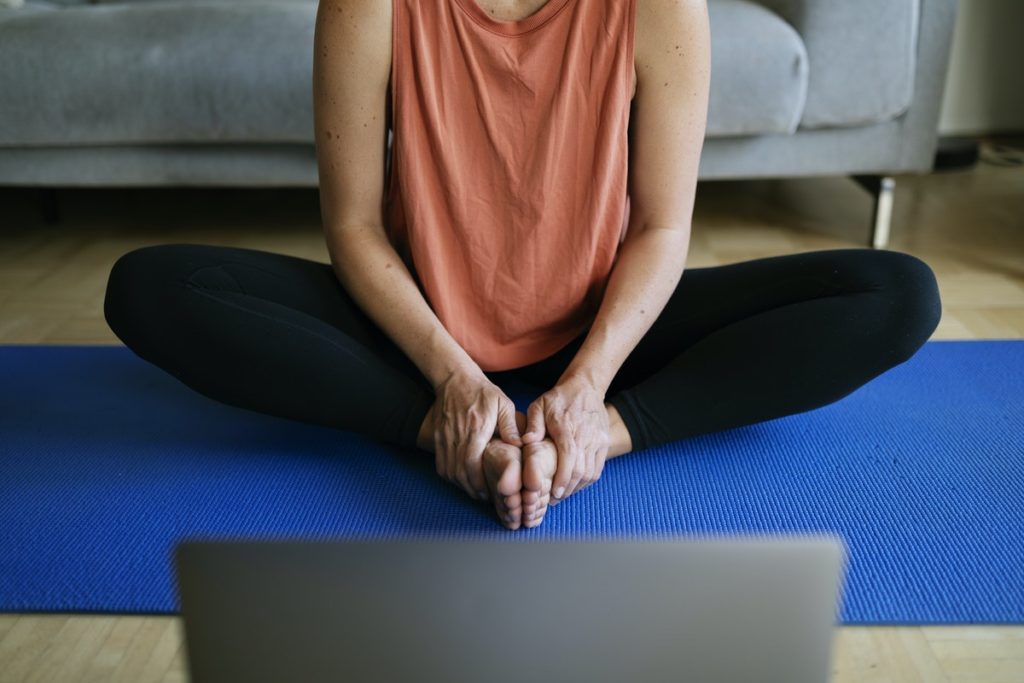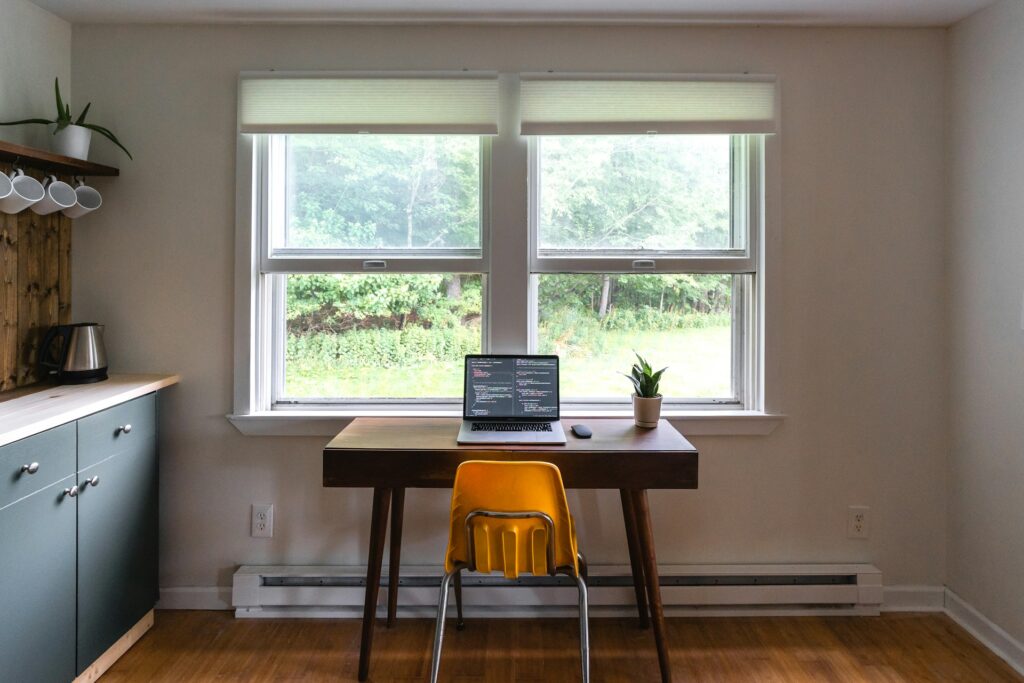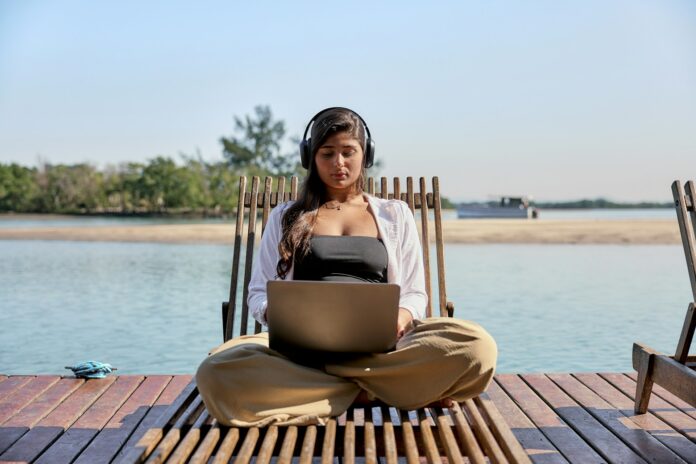Remote work has become a permanent fixture in our professional lives, with millions choosing the flexibility and convenience of working from home long after lockdowns and global pandemics left the daily vernacular. Whether you’re a full-time remote worker or splitting your time between home and office, creating a healthy work environment is crucial.
The reality is that home offices often lack the ergonomic design of traditional workplaces. Your dining table wasn’t designed for eight-hour workdays, and your sofa, whilst comfortable for Netflix, isn’t doing your spine any favours during those video conferences.
Working from soft surfaces like sofas and beds fails to provide proper lumbar support. When we hunch over laptops, we place unnecessary strain on our necks and shoulders. What might feel comfortable for an hour can lead to chronic pain when it becomes your daily routine. These physical discomforts don’t just affect your body; they can impact your productivity, mood, and overall wellbeing.
The good news? With some simple adjustments to your space and routine, you can transform your home office into a haven for both productivity and physical health. Here are 7 essential tips to help improve your posture whilst working from home.
Start & Finish Your Day By Stretching Out Your Back
Beginning your workday with targeted stretches sets a positive tone for your body and mind. It’s an investment in your physical health that takes just minutes but pays dividends throughout the day.
Start with a back flexion stretch. Lying flat on your back (either on the floor or bed), hug both knees into your chest and flex your head towards your knees, creating a ball shape. Hold for 10 seconds. Follow this with side bends: whilst standing, slowly slide your hands down the side of each leg until you feel a gentle stretch. Hold for 10 seconds, ease back to standing, and repeat on the opposite side.
Evening stretches are equally important, helping you transition from work mode to personal time. This ritual not only relieves physical tension but also creates a psychological boundary between your professional and home life. Check out our tips on 5 IDEAL stretches to help you relax after a day in the office.
Here at IDEAL, we’re advocates of incorporating morning yoga into your routine, too. YouTube offers a treasure trove of free resources, from energising morning flows to desk-relief sessions and calming evening practices. Consider bookmarking a few favourites. Having them readily available removes the barrier to starting your practice. A combination of morning, midday, and evening sessions creates a holistic approach to maintaining flexibility and reducing tension throughout your workday.

Perfect Your Posture
Good posture is the foundation of comfortable remote work, yet it’s often the first thing we compromise when settling into our makeshift offices. Small adjustments can make significant differences to your comfort and health.
Position your bottom as far back in your chair as possible, ensuring your monitor sits at eye level. This prevents the all-too-common forward lean that strains your neck and rounds your shoulders. If your desk height doesn’t allow for proper monitor placement, get creative: stack books or board games to achieve the correct height. For sofa workers (though we strongly advise against it), use cushions strategically to support your back and elevate your screen.
Pay special attention to your leg positioning. Your knees should form a 90-degree angle, with feet flat on the floor or supported by a footrest. This position promotes proper circulation and reduces strain on your lower back. Create additional lumbar support by rolling a towel or placing a small cushion in the curve of your lower back. This simple addition helps maintain your spine’s natural curve, preventing the slouching that leads to discomfort.
Remember that perfect posture isn’t about rigidity; it’s about supporting your body’s natural alignment whilst allowing for movement and comfort. Regular posture checks throughout the day help you maintain these beneficial positions until they become second nature.
Make Your Workstation As Comfortable As Possible
Your home office deserves the same attention to comfort and functionality as any traditional workplace. Investing in your workspace is investing in your health and productivity.
Essential ergonomic tools include a laptop stand or monitor riser, external keyboard and mouse, an ergonomic office task chair, an orthopaedic seat cushion, and a proper footrest. These items work together to create a setup that supports your body throughout the workday.
Position your workstation near a window to benefit from natural light, which boosts mood and reduces eye strain. However, manage the light carefully to prevent digital eye strain. Avoid glare on your screen and ensure the light source isn’t directly behind or in front of you.
Consider the often-overlooked elements of comfort: room temperature, air quality, and noise levels. A small fan or space heater can help maintain ideal temperature, whilst a houseplant or two can improve air quality and add a calming natural element to your space. If noise is an issue, invest in noise-cancelling headphones or a white noise machine. These environmental factors significantly impact your ability to maintain good posture. When you’re comfortable, you’re less likely to shift into problematic positions.
Don’t forget about your desk surface itself. Ensure you have adequate space for your equipment and materials, preventing the cramped conditions that lead to poor positioning. A clutter-free workspace promotes better posture by allowing you to arrange everything within easy reach, reducing unnecessary stretching or twisting.

Take A Break From Your Makeshift Desk Every 30 Minutes
Regular movement is crucial for maintaining good posture and overall health. The human body wasn’t designed for prolonged sitting, and even the best ergonomic setup can’t replace the benefits of regular movement.
Set a timer to remind yourself to move every 30 minutes. These breaks needn’t be lengthy. Even a brief walk to the kitchen or a few stretches can reinvigorate your body and mind. Try this simple 5 minute workout that requires no equipment or clothing changes:
- Walking High Knees (1 minute)
- 10 x Shoulder Circles
- 10 x Arm Circles
- 10 x Squat
- 10 x Reverse Lunge Reach Back
- 10 x Low Side to Side Lunge
Beyond structured exercises, incorporate movement into your workday naturally. Take phone calls whilst standing or walking, use a smaller water glass that requires frequent refills, or position your printer across the room. These micro-movements add up throughout the day, promoting better circulation and preventing the stiffness associated with prolonged sitting.
Consider alternating between sitting and standing if possible. Even without a standing desk, you can create makeshift standing workstations using kitchen counters or high tables for certain tasks. This variation in position challenges different muscle groups and prevents the fatigue that comes from maintaining any single posture for too long.

Keep Hydrated
Proper hydration is often underestimated in its impact on posture and overall workplace wellness. When we’re dehydrated, our concentration suffers, leading to poor posture as we struggle to focus.
Aim for at least 8 glasses of water by 8pm, though individual needs vary based on activity level and environment. Keep a water bottle or glass within arm’s reach. Having it visible serves as a constant reminder to drink. Not only does adequate hydration improve concentration and energy levels, but it also helps prevent headaches and reduces eye strain, both of which can contribute to poor posture as we unconsciously adjust our position to compensate for discomfort.
Make hydration more appealing by infusing your water with fresh fruits or herbs, or alternating between water and herbal teas. Set hydration goals and track your intake if needed. There are numerous apps available to help monitor your water consumption. Remember that proper hydration also supports the intervertebral discs in your spine, which rely on water to maintain their cushioning properties.
The added benefit of regular hydration? More frequent trips to the loo, which naturally incorporate movement breaks into your day. These brief walks help reset your posture and provide mental refreshment, creating a positive cycle of hydration and movement.

Invest In Blue Light Protection
Extended screen time can cause eye strain that indirectly affects your posture. When your eyes struggle, you unconsciously lean forward or adopt awkward positions to see better, compromising your spinal alignment.
Blue light blocking glasses have become increasingly sophisticated and stylish, offering protection without the heavy orange tint of earlier models. Wear them during your workday to reduce eye fatigue and the headaches that often accompany prolonged screen use. Many computers and devices now include built-in blue light filters. Activate these during working hours, particularly in the evening when blue light can also disrupt sleep patterns.
Beyond blue light protection, follow the 20-20-20 rule: every 20 minutes, look at something 20 feet away for 20 seconds. This simple practice relaxes the focusing muscles in your eyes and encourages you to briefly adjust your posture. Position your screen correctly, about arm’s length away with the top of the screen at or slightly below eye level. Adjust your display settings for comfortable brightness and contrast, and increase text size if needed rather than leaning in to read.
Remember that eye health and posture are interconnected. When your visual environment is optimised, you’re less likely to adopt the forward head position that strains your neck and upper back. Regular eye exams ensure your prescription is current if you wear glasses, preventing the squinting and leaning that outdated prescriptions can cause.

Create Designated Work Zones
Establishing clear physical boundaries between work and relaxation areas is crucial for both posture and mental wellbeing. When your entire home becomes your office, it’s easy to work from increasingly casual positions that harm your posture.
Designate a specific area for work, even if it’s just a corner of a room. This doesn’t require a separate home office. A dedicated section of your dining table or a small desk in your bedroom can suffice. The key is consistency: when you’re in this space, you maintain proper working posture. This psychological association helps your body automatically adopt better positioning when you enter your work zone.
Avoid the temptation to work from your bed or favourite armchair. These spaces should remain associated with rest and relaxation. If space is extremely limited, use visual cues to transform a dual-purpose area: a special placemat for your laptop, a particular cushion for back support, or even a specific lamp that you switch on during work hours. These signals help your brain and body transition into ‘work mode’ with its associated postural awareness.
At day’s end, physically pack away your work materials. This ritual not only creates mental separation but also prevents the casual ‘quick email check’ from the sofa that often extends into hours of poor posture. By maintaining these boundaries, you protect both your physical health and work-life balance, ensuring your home remains a haven whilst also serving as a productive workspace.





